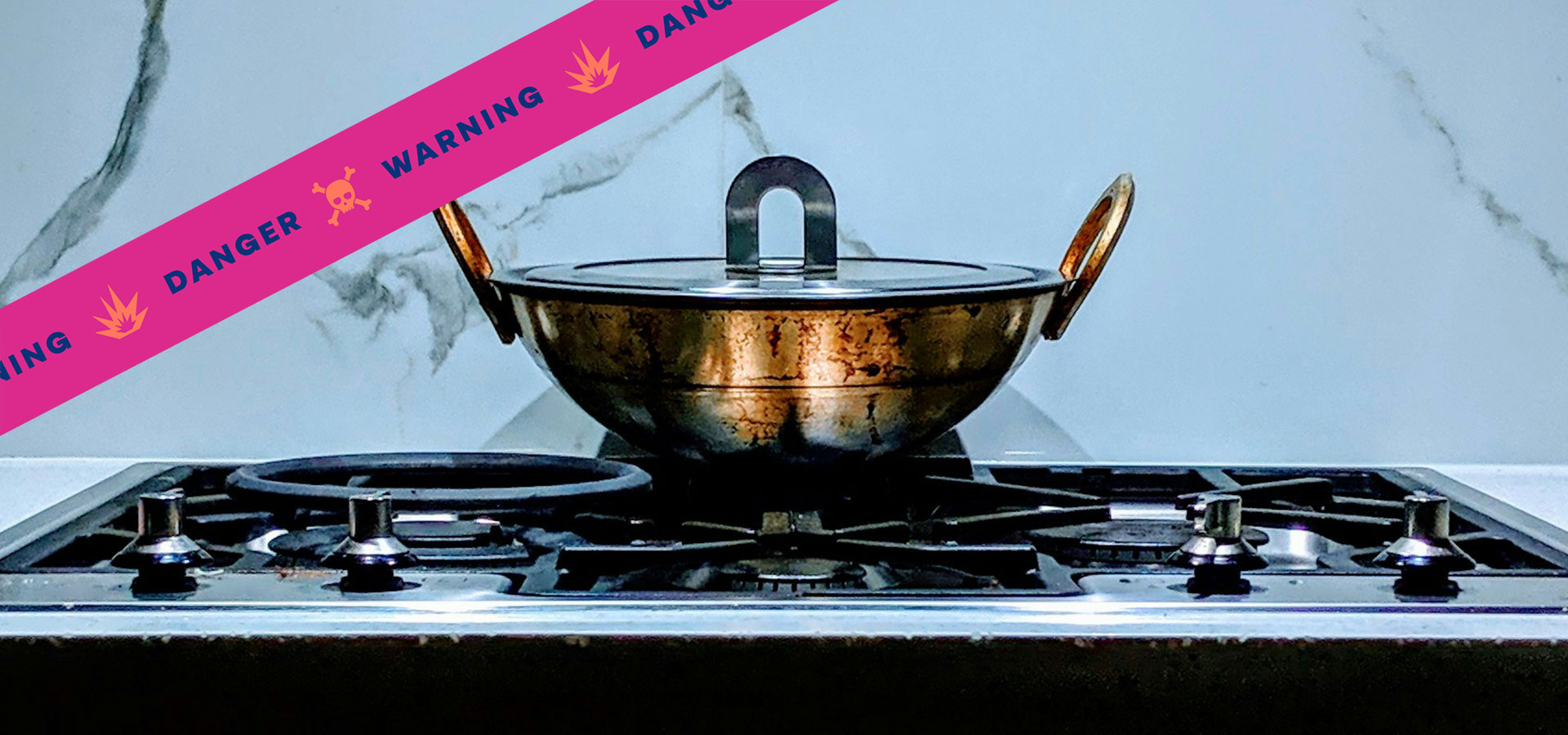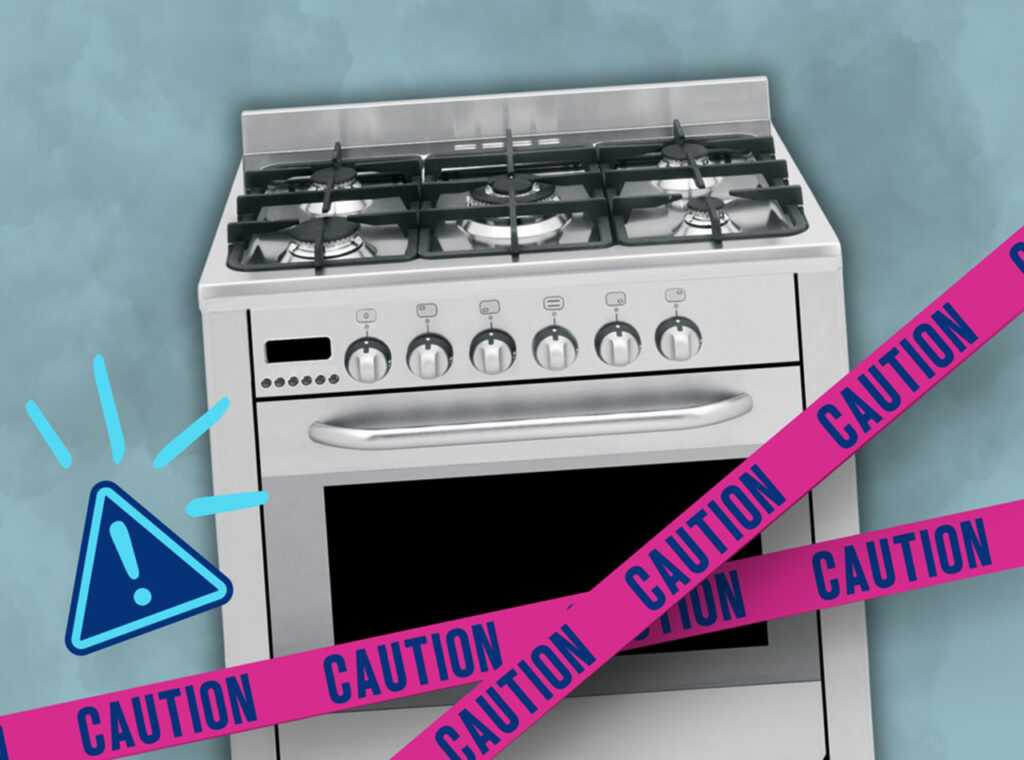Hot & Toxic – The Toxic Reality of “Natural” Gas

Yes, gas stoves are dangerous. Make sure their health risks are added to warning labels!
You may have heard by now that so-called “natural” gas is a hot mess. It’s actually methane, which is cooking the climate and polluting the air inside your home, releasing harmful chemicals that can cause asthma and respiratory symptoms in children.
Unfortunately, millions of Americans are diving into long-term relationships with dangerous gas appliances without being warned about their harms. Gas stoves release toxic pollutants like cancer-causing benzene and asthma-causing nitrogen dioxide. And the fossil fuel industry has known about the health threats of gas stoves for decades, even while telling the public that gas is clean and safe. The American Gas Association went so far as to hire Tobacco industry experts to undermine the science showing the harms of gas stoves.
That’s why ‘Hot & Toxic’, the largest-ever effort to inform and empower consumers about the dangers of methane gas, is asking the Consumer Product Safety Commission (CPSC) to require gas stove manufacturers and retailers to put appropriate warning labels on gas stoves. Consumers deserve accurate information about the health and environmental risks associated with gas stoves. Since the Commission is in charge of keeping consumers safe through product recalls and warning labels, it’s important that the public understand the health risks of using gas stovetops.

In fact, more than 50 studies dating back to the 1970s have documented that pollution from burning gas contributes to asthma and respiratory disease in children. Studies show that children who grow up in a home with a gas stove have a 42% higher risk of developing asthma, and that gas stoves leak methane and cancer-causing benzene, even when they’re turned off. Doctors and scientists at the American Medical Association, American Lung Association, and American Public Health Association have all spoken out about these health risks.
People deserve access to accurate information about the health impacts of products they’re buying. By requiring labels on gas stoves, the Commission can help empower consumers to make informed choices that better protect their health and the environment. Don’t be gaslit by gas stoves — consider taking action by signing the petition today!
Hot & Toxic – The Toxic Reality of “Natural” Gas

Benzene for breakfast? Study finds gas stoves produce toxins linked to cancer
We know that the “natural” gas in millions of American homes is mostly methane, a powerful greenhouse gas that’s worsening the climate crisis. But it turns out that may not even be the worst thing coming out of your gas stove.
A new study from researchers at PSE Healthy Energy found benzene – a widely recognized carcinogen linked to leukemia and lymphoma – as well as an array of other toxins linked to birth defects and cognitive impairment. Benzene was found in 99% of samples, which were taken in the kitchens of 159 homes serviced by Pacific Gas and Electric (PG&E), Southern California Gas (SoCalGas), and San Diego Gas and Electric.
Shockingly, the research shows that it didn’t even take using a gas stove to compromise the air inside our homes — gas stoves leak even when they’re turned off. Researchers found that “in certain cases, just having a gas stove in your kitchen could create benzene concentrations comparable to secondhand (tobacco) smoke.”
Andrea De Vizcaya Ruiz, an associate professor of environmental and occupational health at the University of California, Irvine, told NBC News that prolonged exposure to benzene was a huge health threat. “It’s one of the most direct chemicals that induces cancer, because it transforms the cells in the bone marrow,” she said.
This is just the latest in a growing body of research showing that piping an explosive, toxic fossil fuel into our homes is a public health threat:
A June study of Boston-area homes by Harvard T.H. Chan School of Public Health found benzene and 20 other toxins in the gas in peoples’ homes. One in 20 of the homes surveyed in the study had gas leaks that required followup from the gas utility due to health and safety concerns.
A January study by Stanford University found that 80 percent of methane leaks from stoves occur when they’re turned off. Tellingly, the study found that the age and model of the gas stove didn’t matter much – they looked at 18 brands of cooktops ranging from 3 to 30 years old and found that all of them leak.
An April 2020 study from University of California – Los Angeles found that using a gas stove and burner for about an hour produced levels of carbon monoxide and nitrogen dioxide that would be illegal if measured outdoors.
A 2013 analysis of more than 40 studies found that children growing up in a home with a gas stove had a 42% higher risk of experiencing asthma symptoms.
The findings only increase the urgency of the need to rapidly transition to cleaner, safer electric appliances in our homes. The United States took an important step towards that goal this year with the passage of the Inflation Reduction Act (IRA), which included a host of programs to help people get off fossil fuels in their homes, including:
Funding to help more than 1 million low and middle-income families upgrade to electric appliances.
Tax credits that allow people to deduct up to 30 percent of the cost of upgrades to their homes on their taxes.
Funding to help bolster domestic manufacturing of electric heat pumps, which are in high demand right now.
But this progress is at risk. The New York Times reported last week that the American Gas Association — a gas industry lobbying group funded by gas utilities with their customers’ money — is preparing to undercut and roll back the clean energy investments in the IRA in the next Congress. Slowing the transition to electric appliances would keep millions of Americans trapped in homes with appliances that are linked to cancer and while the gas industry continues to collect record profits for their investors .